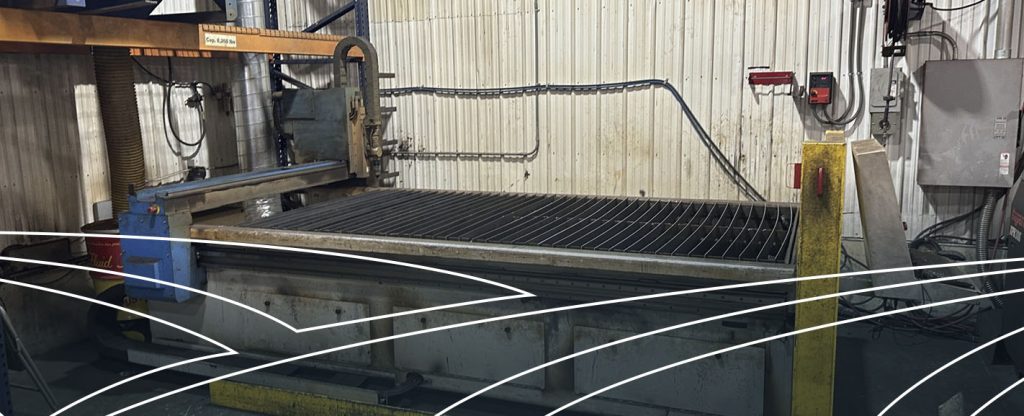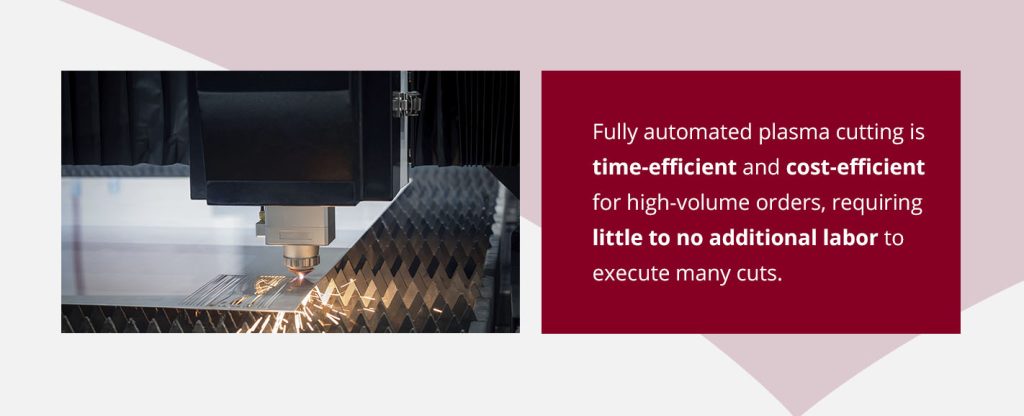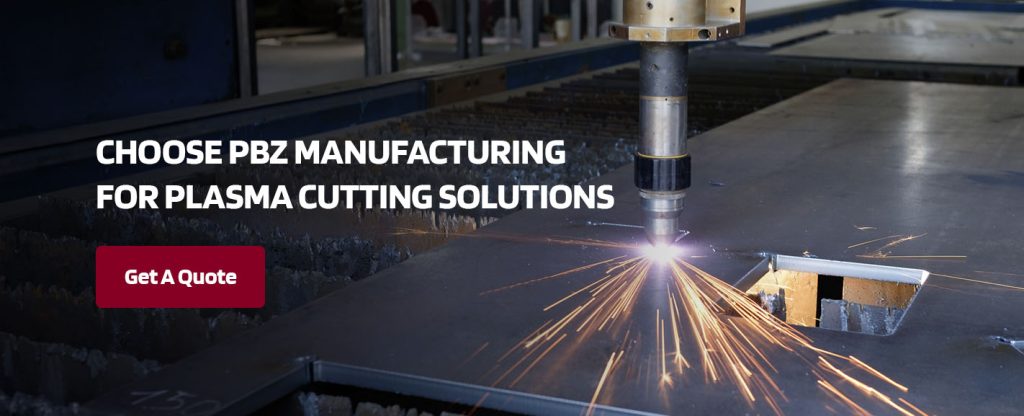

If you are a manufacturer who needs precision cutting for your metal components, plasma cutting may be your solution. The technology dates to the 1950s when it was invented to cut materials that were difficult to cut cleanly. After decades of innovation, today’s plasma cutting machines contribute to subtractive manufacturing in diverse industries, including metal fabrication, construction and automobiles.
A plasma cutter is a machine for cutting metal. Using electrical energy and a gas supply, it forms a plasma arc as hot as over 40,000 degrees Fahrenheit (over 22,000 degrees Celsius) and directs it to cut into a workpiece.
Plasma is the fourth state of matter. Though rare on Earth, it makes up 99% of the universe’s visible matter, and we see it every time we see the sun, look at the stars, stare at the aurora borealis, stretch out next to a campfire or are startled by lightning.
Plasma forms when there’s so much energy in regular matter that all of the atoms become “excited,” and most electrons in their orbits no longer have an energy gradient pushing them to remain bound to the rest of the atom. As a result, the electrons have enough energy to separate from the atoms, and only the single outermost electron has to separate for plasma to form.
Yes, plasma cutters really use plasma. Plasma cutters use an electrical arc — which is already a plasma — to heat up an inert gas into more plasma around it. At the same time, the plasma cutters blow that gas into a small point where the arc melts the material and blows the small puddle of liquid material out the other side.
A plasma cutter generates vast cutting power by combining just a few main components:
Plasma cutters work by bringing together electricity and gas to form plasma and directing that plasma through a torch nozzle to cut a metal object.
This process starts with a power supply that transforms AC current into a stable DC current at the proper amperage. The thicker the material, the higher the amperage must be. The current passes into the torch via an electrode that forms an electrical arc sustained by the power supply.
Inside the torch, the electrical arc ionizes the cutting gas and focuses it on a point. The cutting gas could be compressed air from the manufacturing shop or gases such as compressed nitrogen, argon or oxygen from a canister.
The plasma passes through a swirl ring above the electrode, causing it to turn rapidly as it moves toward the nozzle. The moving plasma accelerates as it passes through the nozzle toward the workpiece.
The ultra-hot plasma arc, controlled by a regulated supply of electrical current and gas, cuts through the metal by melting it and blowing the puddle of molten metal out.
There are three main approaches to plasma cutting:
Plasma cutting has earned its place as one of the most effective metal-cutting technologies because of its significant advantages to manufacturers:

Plasma cutting is optimal for conductive metals. Non-conductive materials demand other methods, like laser cutting or waterjet cutting. Examples of materials outside plasma cutting’s capabilities include:
Laser cutting is better suited than plasma cutting for delicate engraving work on very thin materials. At the opposite extreme, waterjet cutting maintains more precision for the thickest workpieces than plasma cutting.
PBZ Manufacturing draws on a legacy of manufacturing experience that began in 1947 with founder Paul B. Zimmerman’s agricultural equipment repair shop. This shop became a leading full-service metal fabricating partner for manufacturing businesses seeking to scale.
Our team includes certified technicians experienced in applying advanced CAD software for precision outcomes. Our extensive experience with plasma cutting, CNC machines, and other manufacturing technologies makes us a reliable, resourceful manufacturing partner with in-depth industry knowledge.
We have expanded, refined and applied this knowledge by providing plasma cutting services for diverse industries such as agriculture, architecture, metal fabrication and industrial machinery.

If your manufacturing business requires precision plasma cutting, choose an experienced partner with the machinery to cut efficiently at scale. PBZ Manufacturing is exactly that kind of partner. Make our production capacity, machinery and manufacturing experience yours.
Our breadth of manufacturing capabilities and depth of experience combine to help shorten your lead times and scale your business. Along with our precision plasma cutting services, we can meet all of your other cutting, welding and fabrication needs under one roof.
When your order is ready, you collect your products at a single location or have us freight ship them to you. Sourcing all of your extended manufacturing services from a single, reliable provider will save you time and costs as your business grows.
Contact PBZ for a free quote, and you’ll hear back from us within 4 business hours.